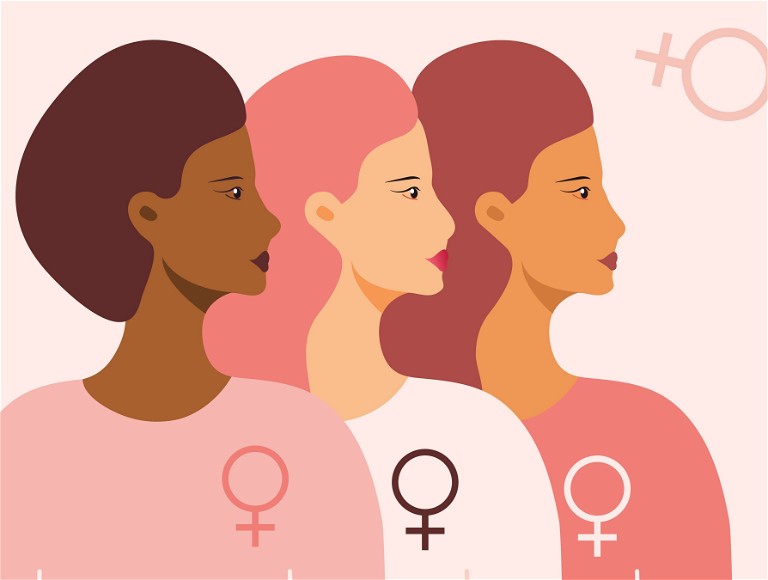WOMEN'S HEALTH
Women’s health in the UK: an in-depth overview
Tina Backhouse from Theramex considers the issues with the current standard of women’s healthcare in the UK, and what steps need to be taken to improve this
The landscape of women’s health in the UK
The topic of women’s health is a critical issue for this country and it is often still being overlooked. Despite significant gains in certain health areas, such as the survival outlook in women’s cancers, national statistics continue to tell an alarming story when it comes to the barriers to access that women face in the UK.1 Earlier this year, the Hologic Global Women’s Healthcare Index put the state of healthcare for women in the UK below that of most comparable Western countries, including Australia, France, Germany and the US.2 We also received a lower rating than countries with historically poor records on gender equality, for example Saudi Arabia and China, with a lack of access to preventative care, pain management and mental health support cited as the reasoning for the findings.
This is despite the introduction of the pioneering Women’s Health Strategyfor England, published in July 2022.3 On one hand, the strategy takes a welcome whole life approach, focusing on women’s health policy and services throughout a woman’s life, as well as boosting representation of women’s voices at all levels of the health and care system. It has ushered in huge gains, such as the increased funding set aside for new women’s health hubs – £25m to be exact.4 It has also brought about the formation of a new network of women’s health champions, spearheaded by Women’s Health Ambassador for England, Professor Dame Lesley Regan. This network is made up of senior leadership in every local care system and co-chaired with NHS England – who will use their leadership and experience to drive forward wider work to improve women’s health. It is undoubtedly a significant move in the right direction, highlighting our government’s awareness of the issues at stake and its commitment to improving women’s lives. However, one year on it is clear that, whilst a positive first step, we still have work to do. Currently, the strategy is extremely broad, with a huge number of commitments from investments to initiatives, but relatively few clear goals for how things will progress. A framework for implementing the strategy beyond the first year would be hugely beneficial in order to ensure the 30 million women and girls currently living in the UK receive access to the healthcare they need.5
Addressing women’s health disparities
The landscape of women’s health in the UK reflects a concerning disparity between healthcare needs and the attention women receive. In this country, ONS data indicates women are more likely to have a long-standing health problem than men.6 Despite this, healthcare delivery is more unfavourable towards women. Astonishingly, female conditions outside of cancer comprise less than 2% of the global pharmaceutical pipeline, even though women make up half the population and are more likely to be affected by a health issue.7 It is clear that addressing the stark disparities in women’s health is a critical imperative, both at a national and regional level, but government alone cannot solve this issue. Improving women’s health prospects requires wider collaboration between policymakers, industry, drug manufacturers and the healthcare system.
Navigating menopause with empathy
One of the key areas of disparity is that of menopause. There is extensive menopause care inequity in this country, with huge variance not only in the rate that hormone replacement therapy (HRT) is prescribed but also in the type of treatment that is available.8 Menopause profoundly impacts women’s physical and emotional well-being, often leading to debilitating symptoms that persist over many years, such as hot flushes, night sweats, sleep disturbances and more. Over 80% of women experience such symptoms for more than a year, with many facing them even seven years after their final period.9 Ensuring fair and equal access to menopause treatment is therefore absolutely vital. All women should be offered a choice so they can access the best treatment for them. It is important to further conversation and establish a consensus that supports a greater equity of access and choice of HRT and provision of individualised care in this country.10 Although there are increasingly open conversations around menopause, we need to be furthering the discussions that will really move the needle. Navigating these conversations demands greater collective understanding and empathy, this need has been highlighted recently, with a number of disappointing decisions made in government to reject opportunities to improve the standards and reduce disparities of menopause care, including a proposal for a national formulary for HRT. In addition, the recent rejection of the menopause leave proposal by the government and the disregard for the recommendation to designate menopause as a ‘protected characteristic’ under the Equalities Act by the Commons Women and Equalities Committee, underscores the need for a more comprehensive and supportive approach.11 In light of this, it is a top priority to continue having these tough discussions and working closely with key decision-makers across government, NHS England and the UK Menopause Taskforce to ensure menopause remains front of the healthcare industry’s mind. With over one billion women globally expected to experience menopause by 2025, it’s crucial to recognise the inequalities that exist in menopause care.12

Innovations in reproductive health, fertility and pregnancy support
Advancements in women’s healthcare have paved the way for transformative innovations, particularly in reproductive health, fertility and pregnancy support. As science and technology continue to evolve, a myriad of contraceptive and fertility technologies have emerged, offering women greater choices and control over their reproductive journey. Focus in this area is particularly important, as one in ten women in the UK have reported experiencing severe reproductive health symptoms in the last year.13 This means countless women are suffering through difficult symptoms at any one time. However, demand for care is clearly outstripping supply, as evidenced by a survey by the Royal College of Obstetricians and Gynaecologists (RCOG), showing there is a distressing inadequacy in women’s access to fundamental gynaecological services in the UK. A staggering percentage of women, ranging from fertility services (61%) to abortion services (60%), reported being unable to access these integral aspects of women’s services. These challenges are further exacerbated by deeply ingrained taboos and stigmas sometimes associated with them, hindering women from receiving the timely and comprehensive care they deserve. This also results in some gynaecological health conditions going undiagnosed for years, often causing chronic pain and understandably difficult psychological issues. For instance, endometriosis, which affects one in ten women in the UK, takes an average of seven and a half years to diagnose.14 Clearly, there is a long road ahead before women’s reproductive health receives the full attention it deserves. We must collectively work towards breaking down the barriers that stand in the way of accessible and compassionate care. Education, awareness campaigns and destigmatisation efforts are pivotal steps in this direction.
Empowering informed choices
So where should our focus lie? The essence of innovating the women’s health space lies in empowering women to make informed decisions about their health and ensuring they have fair and equal access to treatments regardless of where they live. Beyond offering a plethora of options, the focus is on education and understanding. It’s about equipping women with the knowledge they need to choose what best aligns with their circumstances, values and aspirations.
A key aspect of this approach is providing comprehensive information on the benefits, risks and potential outcomes of each choice. By putting women in the driver’s seat of their own healthcare decisions, these innovations facilitate a sense of agency and control. It’s also about ensuring healthcare professionals and policymakers are fully aware of the barriers to access and understand the specific difficulties women face.
Pharma companies should have a commitment to women’s health extending beyond medications, encompassing a comprehensive approach and integrating educational resources and tools to truly drive meaningful change. There should be a strong focus on driving action in improving HRT access equity across the country as all women should be offered a choice so they can access the best treatment for them. These resources can empower women with knowledge about their bodies, reproductive health and overall well-being. By providing valuable information, pharma companies can support women in making proactive choices and taking charge of their health. The multifaceted nature of women’s health demands a collective effort. Looking to the future, it’s imperative to recognise that innovation is not limited to the laboratory or the clinic. It thrives in partnerships, collaborations and a shared commitment to improving women’s lives. The path forward lies in ongoing collaboration, awareness-building and advocacy, all of which are crucial to fostering a healthier, more empowered future for women everywhere.

References
- Visit: bma.org.uk/media/2112/bmawomens-health-cancer-in-womenaug-2018.pdf
- Visit: hologic.womenshealthindex. com/en/report-page
- Visit: gov.uk/government/publications/womens-health-strategy-for-england/womens-health-strategy-for-england
- Visit: gov.uk/government/news/25- million-for-womens-health-hubexpansion
- Visit: ethnicity-facts-figures.service. gov.uk/uk-population-by-ethnicity/demographics/male-and-female- populations/latest
- Visit: ons.gov.uk/peoplepopulationandcommunity/healthandsocialcare/healthandlifeexpectancies/bulletins/ukhealthindicators/2019to2020
- Visit: mckinsey.com/industries/healthcare-systems-and-services/our-insights/unlockingopportunities-inwomens-healthcare?cid=eml-web
- Hillman, S., et al. Socioeconomic status and HRT prescribing: a study of practice-level data in England. British Journal of General Practice 2020; 70(700): e772-e777
- Daly E., et al., (1993). Measuring the impact of menopausal symptoms on quality of life. British Medical Journal 2; 307(6908):836-40. Available at: Measuring the impact of menopausal symptoms on quality of life -PubMed (nih.gov)
- Visit: journals.sagepub.com/doi/full/10.1177/20533691221084827
- Visit: committees.parliament. uk/committee/328/women-andequalities-committee/news/175566/women-being-let-down-by-glacialgovernment-progress-on-menopause/
- Das, R. (2019). Menopause Unveils Itself As The Next Big Opportunity In Femtech. Available at: Menopause Unveils Itself As The Next Big Opportunity In Femtech (forbes.com)
- BMI – Women’s Health Matters 2021: Join the critical conversation about 10 of the most common gynaecological health conditions in the UK
- Royal College of Nursing. Endometriosis fact sheet. Last accessed August 2023

Tina Backhouse is the UK general manager for Theramex. She is passionate about ensuring all women have equal access to treatment and care during the transitions of their life.